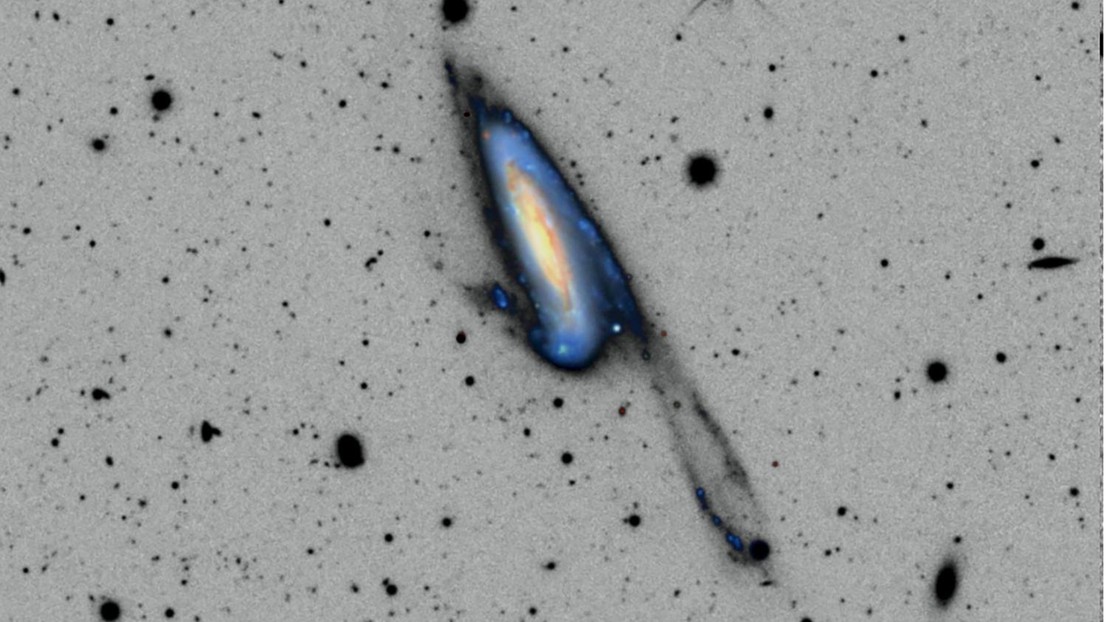Dark Matter Satellite ARRAKIHS Passes Definition Review Phase Before 2030 Launch
21st Nov 2023
The European Space Agency’s (ESA) dark matter satellite, ARRAKIHS, has successfully completed its first milestone: the definition review. Dark matter and dark energy permeate the universe. Very little is known about the elusive and esoteric phenomena, though due to the lack of visibility. Therefore, scientists from the ‘ARRAKIHS consortium’ and ESA aim to use the satellite to characterise and locate the presence of dark matter in early universe galaxies.
ESA has marked the mission as an “F” project. This means that it will move at a quick eight-year pace, from the 2022 initial conception to a 2030 launch. “ESA calls it an F-mission, where F is for fast,” Pascale Jablonka from EPFL’s LASTRO and science lead of ARRAKIHS, said in a statement. Jablonka added: “We are very excited! It’s a happy and emotional moment to get past this first phase. It means that the mission is now concretely valued. We are entering an even more active phase of the project, for which we need support from the national agencies.”
What Is ARRAKIHS Aiming To Achieve?
EPFL outlines that under current models, dark energy forms 68% of all matter in the universe, and dark matter makes up 27% of all matter in the universe. The remaining ‘visible’ matter comprises a mere 5%, including the identifiable stars and planets that construct galaxies. But to pinpoint dark matter, “specific and dedicated observational strategies” are needed, EPFL said.
As a result, ESA has commissioned the ARRAKIHS satellite to unearth the make-up of the universe and what ties planets and stars together. EPFL said ARRAKIHS is an acronym for ‘Analysis of Resolved Remnants of Accreted Galaxies as a Key Instrument for Halo Surveys’.
Derived colloquially from the Dune novel, EPFL said the satellite will be placed in Low Earth Orbit (LEO) and will be tasked with unveiling “one of modern physics darkest secrets”. Under a three-phase approach, the satellite will aim to uncover the nature of dark matter, its temperatures, and if it is self-interacting.
Where AARAKHIS Will Look For Dark Matter
Past studies of the universe have identified that dark matter is ‘imprinted’ in faint dwarf systems that circle enormous galaxies. The Milky Way is considered one of these galaxies, but ARRAKIHS will explore them further away with “stellar streams in their halos”, EPFL said. Researchers recently uncovered that spiral galaxies – such as the Milky Way – are far more prominent than first thought, dating back over 10 billion years.
To locate dark matter in the early universe, ARRAKIHS will monitor 75 “Milky-Way analogs”. However, due to their meagre visibility, the satellite will perform observations in LEO. This is done to achieve an optimal outcome and prevent the sensors from being obstructed by Earth’s atmosphere. From there, comparative analysis will be performed based on past models of dark energy and predictions. Each ‘system observation’ will last 150 hours, with scientists deciphering the recordings – “each and every detail,” EPFL said.
ESA’s Role & ‘Mission Definition’ Review
In 2022, ESA moved forward with the ARRAKIHS proposal, and recently, the project achieved its first milestone: definition review. ESA marked the project as an “F” mission, setting expectations that the satellite will be delivered within eight years.
Stringent policies are intrinsic to “F” missions. That being, costing less than €175 million, being ESA-led, and following a “design-to-cost approach,” EPFL said. The mission definition phase saw the satellite complete its review of “science, science instruments, the spacecraft and operations”.
Subsequent steps will entail a full feasibility assessment of the mission that an independent body will review. EPFL said that thereafter, a recommendation review will be tabled at ESA’s Science Program Committee (SPC). During the appraisal, ESA’s member states will then approve the next stage: implementation.
The ARRAKIHS Consortium
Monitoring faint structures will be key to unveiling the secrets of dark matter, EPFL said, once ARRAKIHS launches in 2030. ESA and the ARRAKIHS consortium will lead the project headed by Spain, with Switzerland’s EPFL leading on the science component. By passing the initial stages, ESA and the consortium have the go-ahead to deliver the remaining phases up until SPC review.







Thank you for your comment! It will be visible on the site after moderation.